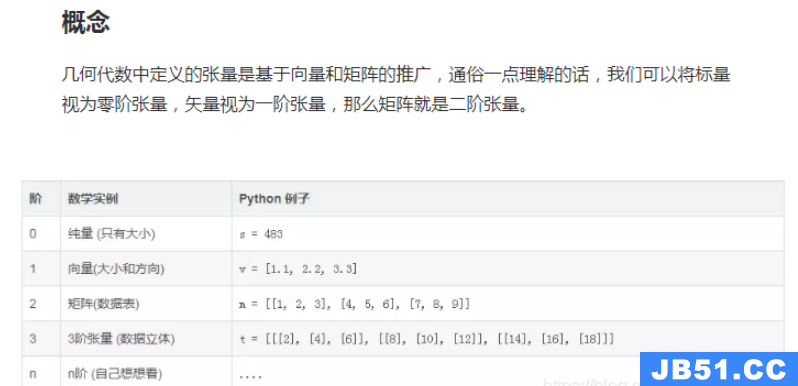神经网络通常依赖反向传播求梯度来更新网络参数,求梯度过程通常是一件非常复杂而容易出错的事情。
而深度学习框架可以帮助我们自动地完成这种求梯度运算。
Tensorflow一般使用梯度磁带tf.GradientTape来记录正向运算过程,然后反播磁带自动得到梯度值。
这种利用tf.GradientTape求微分的方法叫做Tensorflow的自动微分机制。
一,利用梯度磁带求导数
import tensorflow as tf numpy as np # f(x) = a*x**2 + b*x + c的导数 x = tf.Variable(0.0,name = "x",dtype = tf.float32) a = tf.constant(1.0) b = tf.constant(-2.0) c = tf.constant(1.0) with tf.GradientTape() as tape: y = a*tf.pow(x,2) + b*x + c dy_dx = tape.gradient(y,x) print(dy_dx)
tf.Tensor(-2.0,shape=(),dtype=float32)
对常量张量也可以求导,需要增加watch with tf.GradientTape() as tape: tape.watch([a,b,c]) y = a*tf.pow(x,1)"> c dy_dx,dy_da,dy_db,dy_dc =print(dy_da) print(dy_dc)
tf.Tensor(0.0, shape=(), dtype=float32)
tf.Tensor(1.0, dtype=float32)
可以求二阶导数 with tf.GradientTape() as tape2: with tf.GradientTape() as tape1: y = a*tf.pow(x,1)"> c dy_dx = tape1.gradient(y,x) dy2_dx2 = tape2.gradient(dy_dx,x)
tf.Tensor(2.0, dtype=float32)可以在autograph中使用 @tf.function def f(x): a = tf.constant(1.0) b = tf.constant(-2.0) c = tf.constant(1.0) 自变量转换成tf.float32 x = tf.cast(x,tf.float32) with tf.GradientTape() as tape: tape.watch(x) y = a*tf.pow(x,2)+b*x+c dy_dx =return((dy_dx,y)) tf.print(f(tf.constant(0.0))) tf.print(f(tf.constant(1.0)))
(-2, 1)
(0, 0)二,利用梯度磁带和优化器求最小值
求f(x) = a*x**2 + b*x + c的最小值 # 使用optimizer.apply_gradients ) optimizer = tf.keras.optimizers.SGD(learning_rate=0.01) for _ in range(1000): with tf.GradientTape() as tape: y = a*tf.pow(x,x) optimizer.apply_gradients(grads_and_vars=[(dy_dx,x)]) tf.print(y =; x =使用optimizer.minimize optimizer.minimize相当于先用tape求gradient,再apply_gradient tf.float32) 注意f()无参数 f(): a = tf.constant(1.0) y = a*tf.pow(x,1)">c(y) optimizer = tf.keras.optimizers.SGD(learning_rate=0.01) ): optimizer.minimize(f,[x]) tf.y = 0 ; x = 0.999998569
在autograph中完成最小值求解 tf.float32) optimizer = tf.keras.optimizers.SGD(learning_rate=0.01) @tf.function minimizef(): a = tf.constant(1.0in tf.range(1000): 注意autograph时使用tf.range(1000)而不是range(1000) with tf.GradientTape() as tape: y = a*tf.pow(x,1)"> c dy_dx == a*tf.pow(x,1)"> c y tf.(minimizef()) tf.print(x)
0
0.999998569使用optimizer.minimize ) @tf.function (y) @tf.function train(epoch): in tf.range(epoch): optimizer.minimize(f,[x]) (f()) tf.print(train(1000)) tf.print(x)
0
0.999998569
参考:
开源电子书地址:https://lyhue1991.github.io/eat_tensorflow2_in_30_days/
GitHub 项目地址:https://github.com/lyhue1991/eat_tensorflow2_in_30_days

